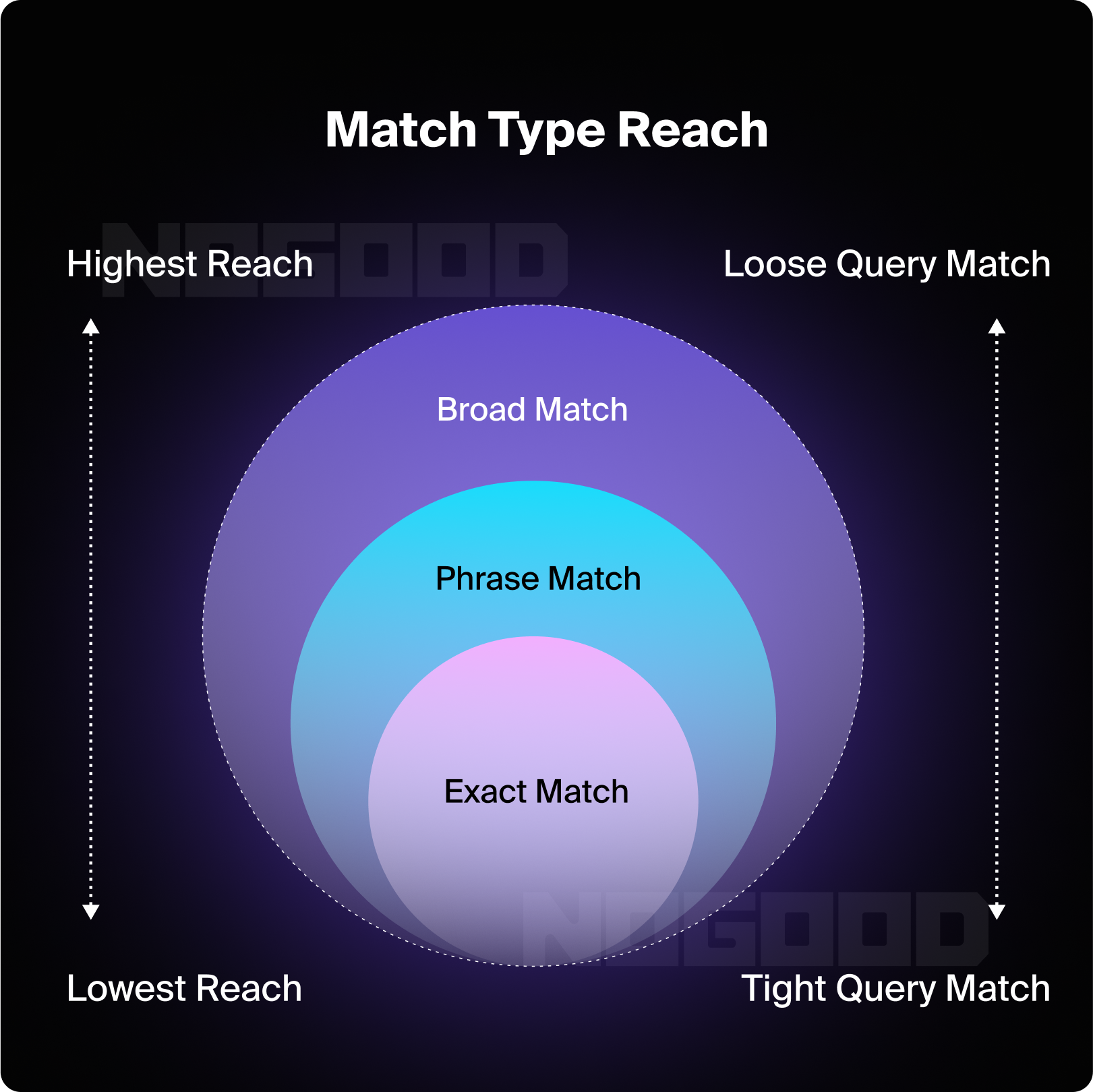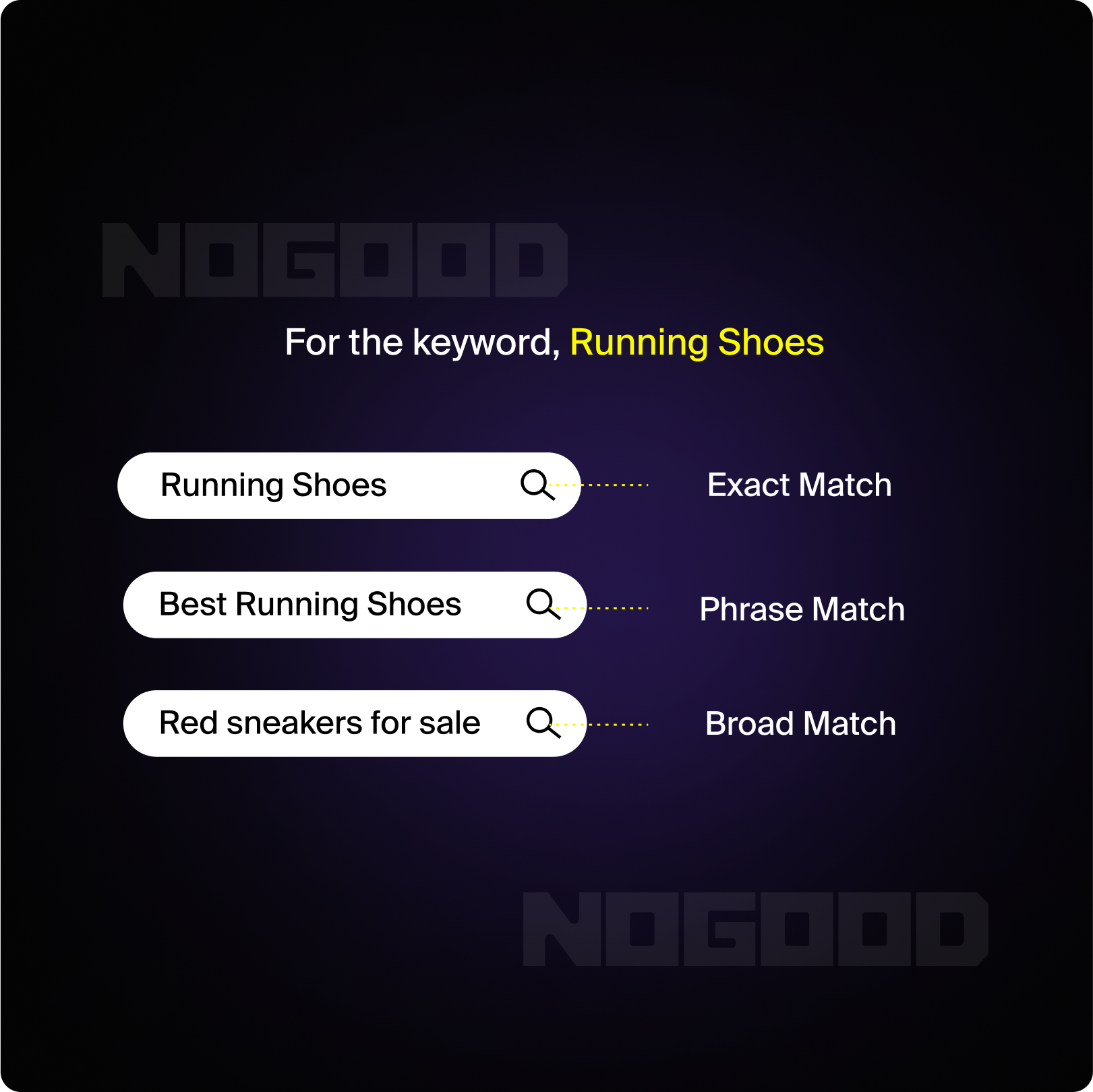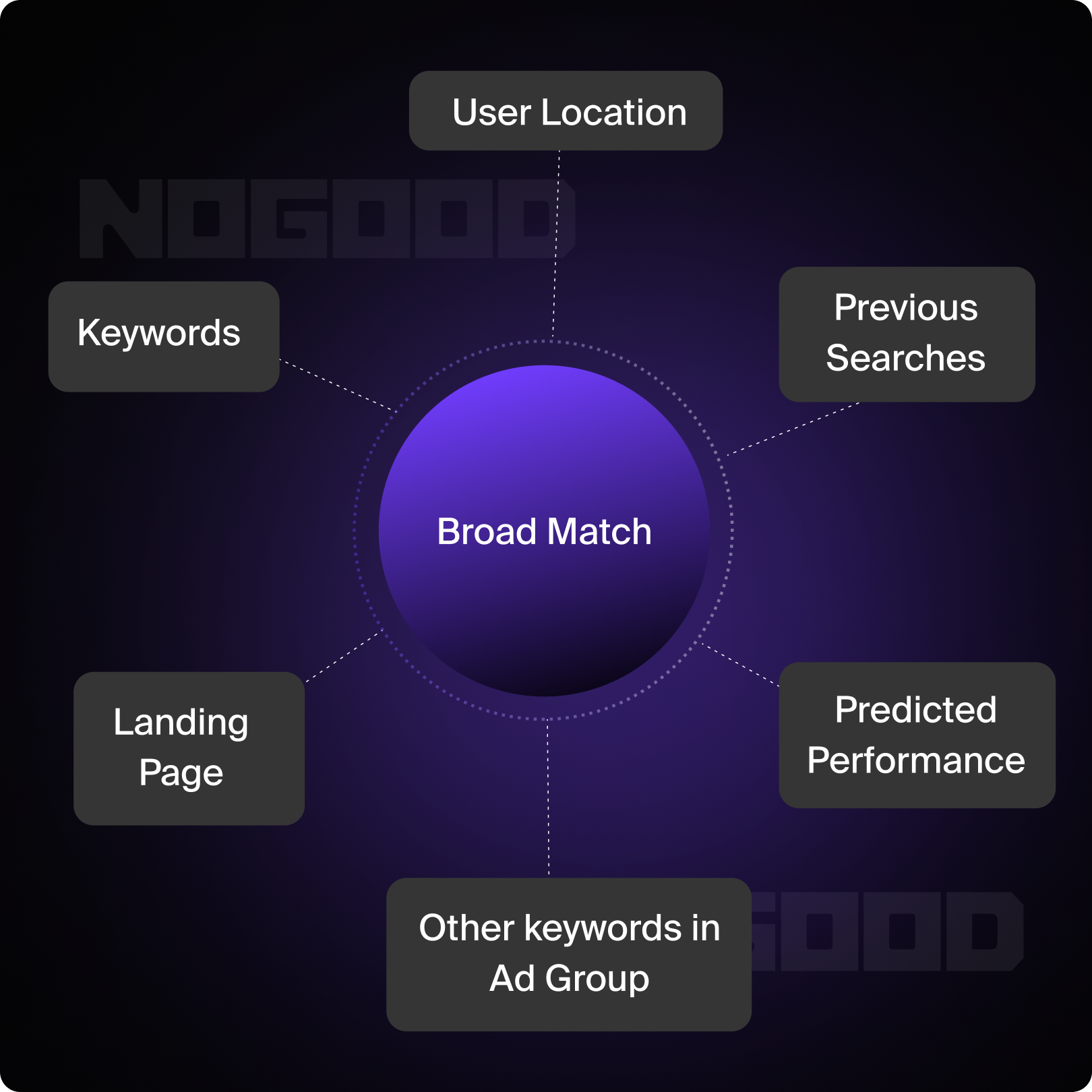As digital marketing evolves, so does the complexity of search engine marketing (SEM). One aspect that continues to generate debate among SEM professionals is the use of broad match keywords within your paid search strategy. While phrase and exact match keywords were historically the bread and butter of many digital marketers’ keyword strategies, as Google’s algorithm and ability to provide results for broad match keywords, we need to look into updating our strategies to include this match type. But how do I know when it is right to test broad match keywords? And how do I ensure that I am testing them efficiently without wasting ad spend? That is what we are here to determine today.
What is a Broad Match Keyword?
Before we dive in on how and when marketers should test broad match keywords, it is important to have a strong understanding of what exactly they are and how they work. Broad match is a keyword match type in Google Ads that allows your ad to show on searches that are related to the meaning of your keyword, which can include searches that don’t contain the keyword terms.

This match type helps your ads reach a wider audience without requiring an extensive keyword list. For example, including a board-match match type on the keyword “running shoes” can match searches like “blue sneakers for sale” or “red tennis shoes,” broadening your reach and increasing the possibilities for conversions.
How Does Broad Match Differ from Phrase and Exact Match?
Broad match keywords differ significantly from phrase and exact match types. Here’s a quick comparison:
- Exact Match: Your ads will only show when the search query matches the exact keyword or close variants with the same meaning. This match type offers the highest level of control but the least reach.
- Phrase Match: Your ads can appear when the search query includes the meaning of your keyword. Phrase match offers a balance between control and reach, allowing for slight variations in search queries.
- Broad Match: Your ads can show on searches that are related to the meaning of your keyword. This match type offers the greatest reach but requires careful management to avoid irrelevant clicks.

Evolution of Broad Match
If you were to ask many marketers even just a couple of years ago if they were running broad match keywords in their SEM strategy, their answer was likely no. In the past, broad match keywords were often seen as too, well, “broad.” They ended up showing on search terms that were not relevant to the advertiser and were seen as inefficient, leading to wasted ad spend on irrelevant clicks.
However, Google has significantly improved broad matches with advanced machine learning algorithms that better understand user intent and context. Google says, “Broad match is not the same as it was, redesigned completely to be more powerful paired with Smart Bidding. No more need to manage millions of variations of the same keyword.”
Now, broad match can match relevant queries just as effectively as exact and phrase match, by considering various signals, including:
- The actual keyword being targeted
- The searcher’s recent search activities and intent
- The content of the landing page the ad for the keyword is pointing to
- Other keywords in an ad group to better understand keyword intent/true meaning
- The searcher’s location
- Predicted performance

When to Use Broad Match Keywords
While broad-match keywords have come a long way in recent years and can provide a lot of value for a lot of different advertisers, we wouldn’t make the blanket statement that all marketers should use broad-match keywords. In fact, we would typically only suggest broad match to advertisers who:
- Are comfortable with their current CPA or ROAS: As broad match can sometimes be seen as slightly less efficient, especially when starting out, we typically only recommend broad match keywords to advertisers who are satisfied with your current Cost Per Acquisition (CPA) or Return on Ad Spend (ROAS) and are looking to scale.
- You have a strong impression share: If you currently have a strong impression share on your phrase and exact match keywords, scaling on your own without adding additional keywords to your strategy could be difficult. Broad match keywords can help you get in front of additional searchers without needing to conduct additional keyword research.
- Value growth over efficiency: If the advertiser’s goal is to grow and reach a wider audience rather than focusing solely on efficiency then broad match keywords might be a good opportunity to help scale.
When to Avoid Broad Match Keywords
On the other side of the coin, there are a couple of aspects where we don’t typically recommend testing broad match keywords.
- Efficiency is a priority: If your focus is on maximizing efficiency and minimizing wasted spend, broad match might not be the best choice.
- Minimal budgets: If you have a small budget (say under $15k/month) it is wise to stick with match types where you can have confidence you know exactly who you are showing your ads to.
- High competition verticals: In highly competitive industries where irrelevant clicks can be costly, broad match may lead to significant inefficiencies.
Testing Broad Match Keywords
If you feel like broad match keywords are a right fit for your brand, now is the perfect time to start testing them. With that said, we have developed a list of ways we suggest testing broad match keywords efficiently, and a list of ways we would suggest avoiding testing broad match keywords to ensure you don’t waste any ad spend.
Ways We Don’t Recommend Testing
- Switching All Match Types to Broad Match : Simply switching all your keywords from exact/phrase match to broad match is a strategy that a lot of advertisers find issues with. While this might be the easiest and quickest way to test broad match it typically leads to an influx of inefficiencies as it sends everything back into learning mode and removes the ability for historically efficient phrase and exact match keywords from showing. Additionally, it makes it hard to have an apples-to-apples comparison of how broad match performs vs. the previous match types.
- Adding Broad Match on Top of Historical Match Types: While this option is slightly better than the prior option as it leaves the keywords with historic learnings as is and doesn’t set everything back into a learning period, we also typically don’t recommend this testing strategy as we find that the broad match keywords tend to steal all of the spend from the phrase and exact match keywords, again, making it hard to have a good comparison of how broad match works vs. other match types.
How We Suggest Testing Broad Match
- Net-New Campaign With Selected Keywords: The number one strategy that we tend to recommend when starting to test broad match keywords is selecting approximately 10 of your top-performing keywords from a campaign and breaking them out into a net-new campaign to test on their own.
This strategy allows you to keep complete control over the amount of spend that you are pushing to the broad match keywords as they are in the learning phase and are less efficient. Over time, it also allows you to get that apples-to-apples comparison of what match type is more efficient.
As time goes on, you can continue to add in additional keywords as you see efficiency improving and shift spend away from the original campaign and towards the new campaign.
If you are testing this strategy, make sure you are including filtering negatives in the new campaign to avoid any keyword cannibalization from the existing campaign. This means, for each keyword that you are testing in the broad match campaign, make sure you add the negative exact match version of the keyword to the campaign as well to push those searches to the original campaign.
When set up properly, we have seen the broad match version of the campaign drive CPAs up to 40% lower than their exact and phrase match campaign counterparts.
- Ad Variation Test: Another way that you can test running broad match keywords in a controlled way is by setting up a custom experiment. To do this, follow the following steps:
- 1: Go to the experiments tab in Google Ads
- 2: Select “Create a New Experiment”
- 3: Select “Custom Experiment”
- 4: Name your experiment
- 5: Select the campaign you want to test broad match with
- 6: Enter a suffix for the trial name
- 7: Go to the keywords in the trial campaign
- 8: Select all of the keywords and hit “Edit” > “Change match type” > “Upgrade to broad match”
- 9: Select “Schedule”
- 10 Select your experiment goals, split, and dates
- 11: Create your experiment
Tips for Testing Broad Match
- Play the Long Game: We like to say that testing broad match keywords is a marathon, not a sprint. Broad match keywords take longer to get out of learning mode and drive efficient results than other match types. Keep in mind that it tends to get worse before it gets better. Don’t jump ship if you are not seeing the results you were hoping for right off the bat. We typically recommend giving broad match for at least a month to see decent results.
- Daily Monitoring of Search Terms: As mentioned above, broad match keywords tend not to be the strongest performers from the start. They tend to improve performance over time as they learn what is relevant and drives conversions and what is not. With that said, you can help speed up this process and push the algorithm in the right direction by keeping a close eye on the search term report from the start and adding in negative keywords as you see irrelevant terms coming through. We typically suggest doing this exercise daily, at least for the first two weeks, then you can pull back naturally as you start to see the number of relevant search terms increasing and the number of irrelevant search terms decreasing.
- Avoid SKAG Format: Single Keyword Ad Groups (SKAG) are not ideal for broad match testing as broad match keywords learn best from the other keywords within the ad group. Make sure to have at least 5 other thematically similar keywords within each ad group to give the match type its best chance.
- Use Automated Bidding Strategies: Google highly recommends utilizing Smart Bidding strategies when testing broad match to drive the best results. That means that when setting up a broad match campaign, you should be using one of the following bidding strategies:
- Maximize conversions
- Maximize conversion value
- Target CPA
- Target ROAS.
Continuously Monitor Broad Match Keywords to Maximize ROI
Broad match keywords, when used correctly, can significantly enhance the reach of your Google Ads campaigns. However, they require careful testing and monitoring to ensure they deliver relevant traffic without wasting ad spend.
By following the strategies and tips outlined in this post, you can effectively test broad-match keywords and harness their full potential. If you can take any piece of advice from this post, it should be that a broad match is not going to be an overnight success. Make sure you are giving the match type more than enough time to gather data/learnings to help it get out of learning mode. That is when you will start to see the results.
Happy testing!






